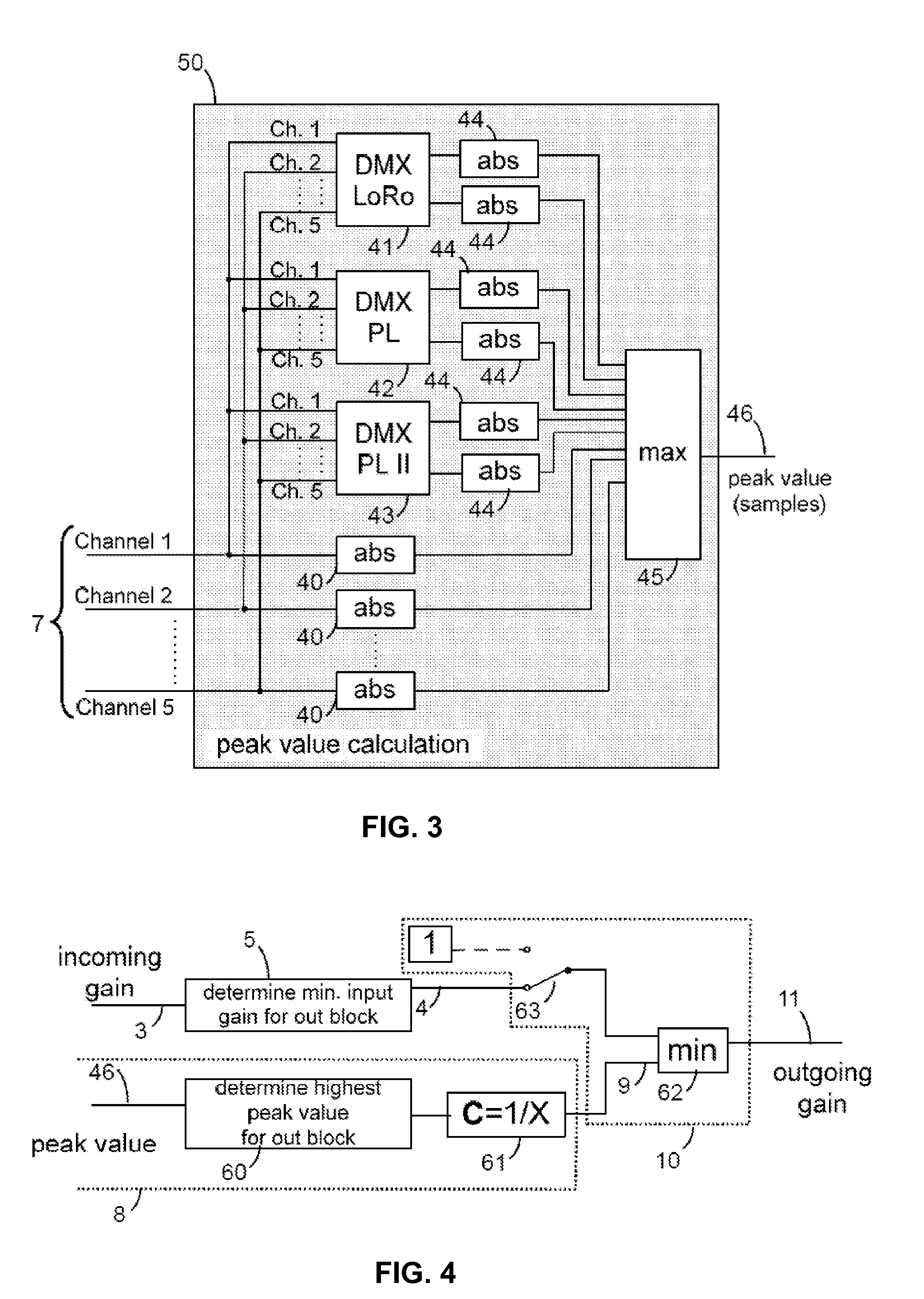Signal clipping protection using pre-existing audio gain metadata
a technology of audio gain and audio signal, applied in the field of audio signal clipping protection using pre-existing audio gain metadata, can solve the problems of not being able to reproduce the audio with full dynamic range, not being able to adapt to other conditions, not always allowing listening conditions to allow taking advantage, etc., and achieve the effect of higher computation costs
- Summary
- Abstract
- Description
- Claims
- Application Information
AI Technical Summary
Benefits of technology
Problems solved by technology
Method used
Image
Examples
Embodiment Construction
[0065]AAC / HE-AAC and Dolby Digital / Dolby Digital Plus support the concept of metadata, more specifically gain words that carry a time varying gain to be optionally applied to the audio data upon decoding. For the purpose of reducing the data, these gain words are typically only sent once per data segment, e.g. per block or frame. In said audio formats these gain words are optional, i.e. it is technically possible to not send the data. Dolby Digital and Dolby Digital Plus encoders typically send the gain words, whereas AAC and HE-AAC encoders often do not send the gain words. However, the numbers of AAC and HE-AAC encoders which send the gain words is increasing. The application allows decoders or transcoders receiving an audio stream to do “the right thing” in both situations. If audio gain words are provided, “the right thing” would be to process the received audio gain words as truthfully as possible, but override them when the incoming gain words do not provide enough attenuation...
PUM
 Login to View More
Login to View More Abstract
Description
Claims
Application Information
 Login to View More
Login to View More - R&D
- Intellectual Property
- Life Sciences
- Materials
- Tech Scout
- Unparalleled Data Quality
- Higher Quality Content
- 60% Fewer Hallucinations
Browse by: Latest US Patents, China's latest patents, Technical Efficacy Thesaurus, Application Domain, Technology Topic, Popular Technical Reports.
© 2025 PatSnap. All rights reserved.Legal|Privacy policy|Modern Slavery Act Transparency Statement|Sitemap|About US| Contact US: help@patsnap.com



